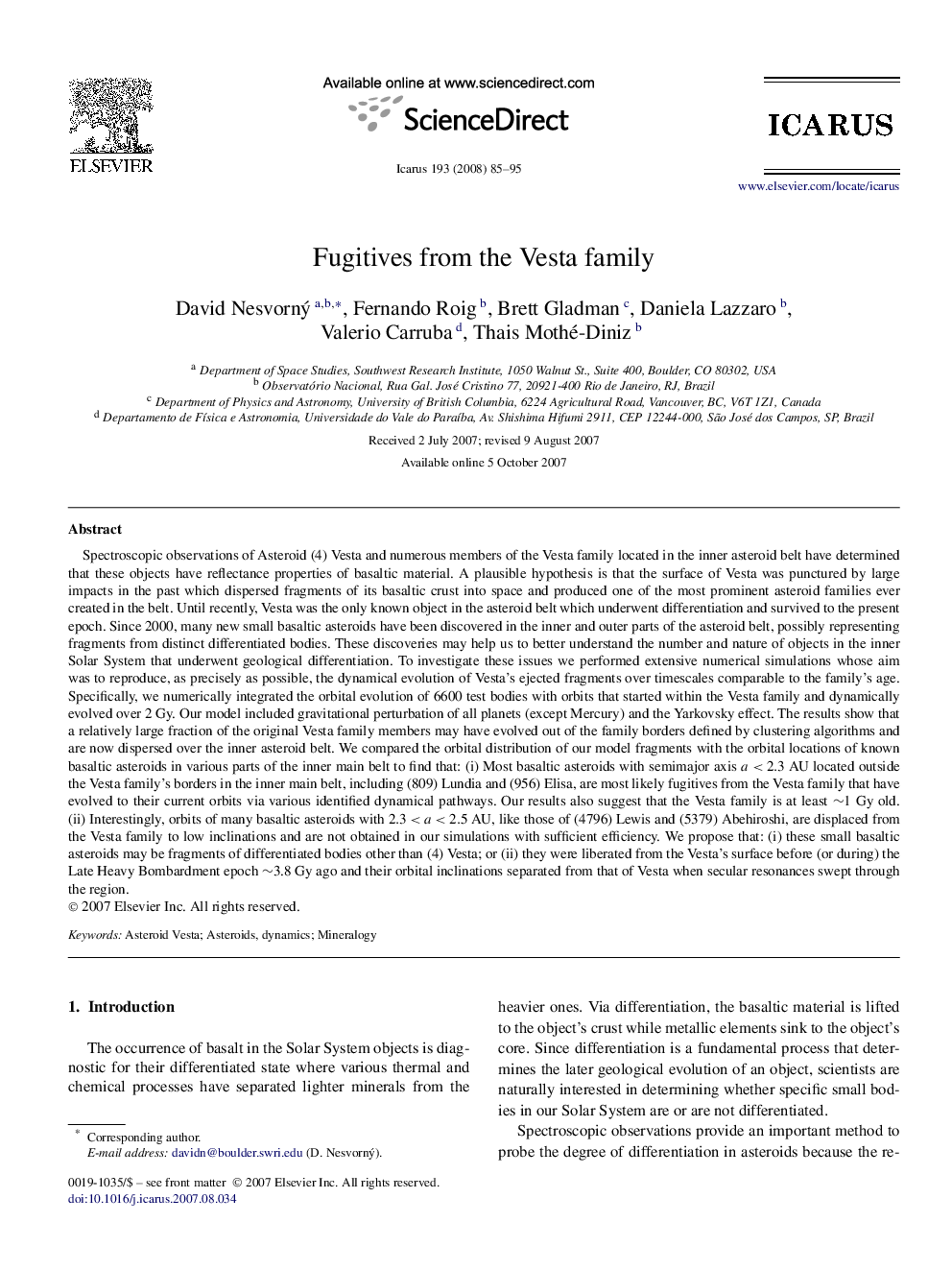| کد مقاله | کد نشریه | سال انتشار | مقاله انگلیسی | نسخه تمام متن |
|---|---|---|---|---|
| 1775393 | 1021192 | 2008 | 11 صفحه PDF | دانلود رایگان |

Spectroscopic observations of Asteroid (4) Vesta and numerous members of the Vesta family located in the inner asteroid belt have determined that these objects have reflectance properties of basaltic material. A plausible hypothesis is that the surface of Vesta was punctured by large impacts in the past which dispersed fragments of its basaltic crust into space and produced one of the most prominent asteroid families ever created in the belt. Until recently, Vesta was the only known object in the asteroid belt which underwent differentiation and survived to the present epoch. Since 2000, many new small basaltic asteroids have been discovered in the inner and outer parts of the asteroid belt, possibly representing fragments from distinct differentiated bodies. These discoveries may help us to better understand the number and nature of objects in the inner Solar System that underwent geological differentiation. To investigate these issues we performed extensive numerical simulations whose aim was to reproduce, as precisely as possible, the dynamical evolution of Vesta's ejected fragments over timescales comparable to the family's age. Specifically, we numerically integrated the orbital evolution of 6600 test bodies with orbits that started within the Vesta family and dynamically evolved over 2 Gy. Our model included gravitational perturbation of all planets (except Mercury) and the Yarkovsky effect. The results show that a relatively large fraction of the original Vesta family members may have evolved out of the family borders defined by clustering algorithms and are now dispersed over the inner asteroid belt. We compared the orbital distribution of our model fragments with the orbital locations of known basaltic asteroids in various parts of the inner main belt to find that: (i) Most basaltic asteroids with semimajor axis a<2.3AU located outside the Vesta family's borders in the inner main belt, including (809) Lundia and (956) Elisa, are most likely fugitives from the Vesta family that have evolved to their current orbits via various identified dynamical pathways. Our results also suggest that the Vesta family is at least ∼1 Gy old. (ii) Interestingly, orbits of many basaltic asteroids with 2.3
Journal: Icarus - Volume 193, Issue 1, January 2008, Pages 85–95